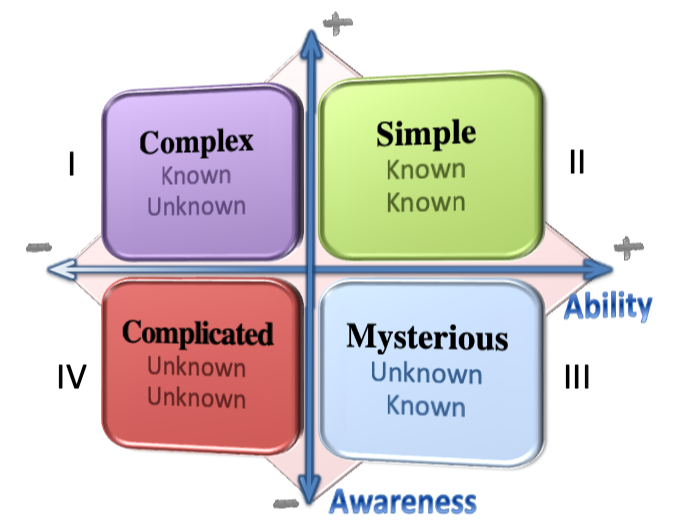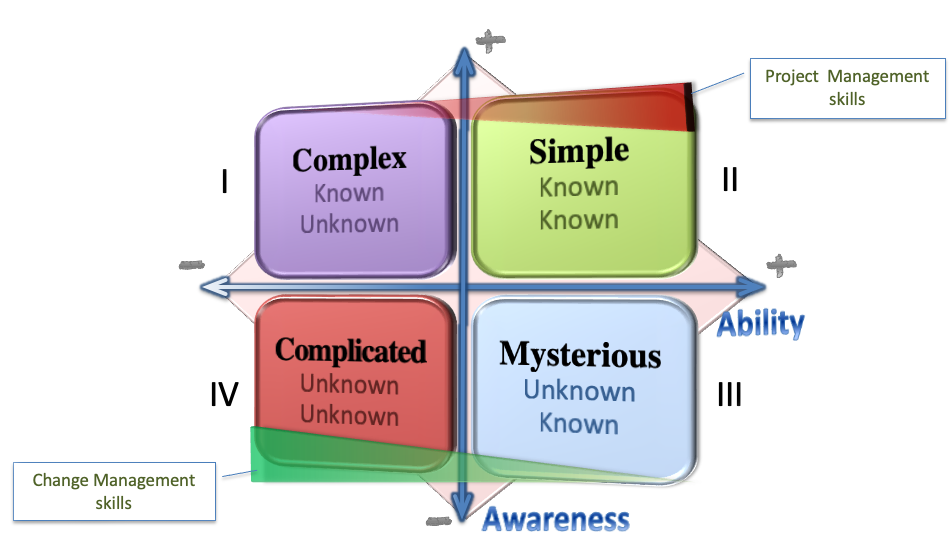

Institute X equips leaders with The Change Playbook™, structured coaching, and proven alignment strategies to drive effective change across organizations—reducing risk and strengthening business judgment.
Institute X’s matrix helps executives identify when tactical tools suffice—and when strategic, executive led change leadership is essential.
Awareness answers: “Do we understand this behavior or resistance ahead of time?”

This dimension measures not just skill—but consistent effectiveness at addressing resistance.
| I | Complex (Known Unknown) | Resistance we anticipate but cannot handle. Calls for strategic, executive led change management. |
| II | Simple (Known Known) | Familiar resistance and proven capability to manage it. Tactical change tools suffice. |
| III | Complicated (Unknown Known) | We can handle resistance, but haven’t anticipated it fully. Signals need for stronger groundwork. |
| IV | Mysterious (Unknown Unknown) | Resistance we neither anticipate nor can handle. Rare, high-risk innovation territory. |

Preparation matters. Resistance is rooted in identity and group dynamics—not just process. Even awareness won’t overcome lack of capacity.
Change management tools succeed in simple contexts. For transformative outcomes, executive commitment, organizational capacity, and strategic alignment are critical. For more on overcoming resistance and building executive capability, see our Effective Change Leadership FAQ.
Institute X helps you elevate your change leadership—instilling capacity and readiness for complex, high-risk change.